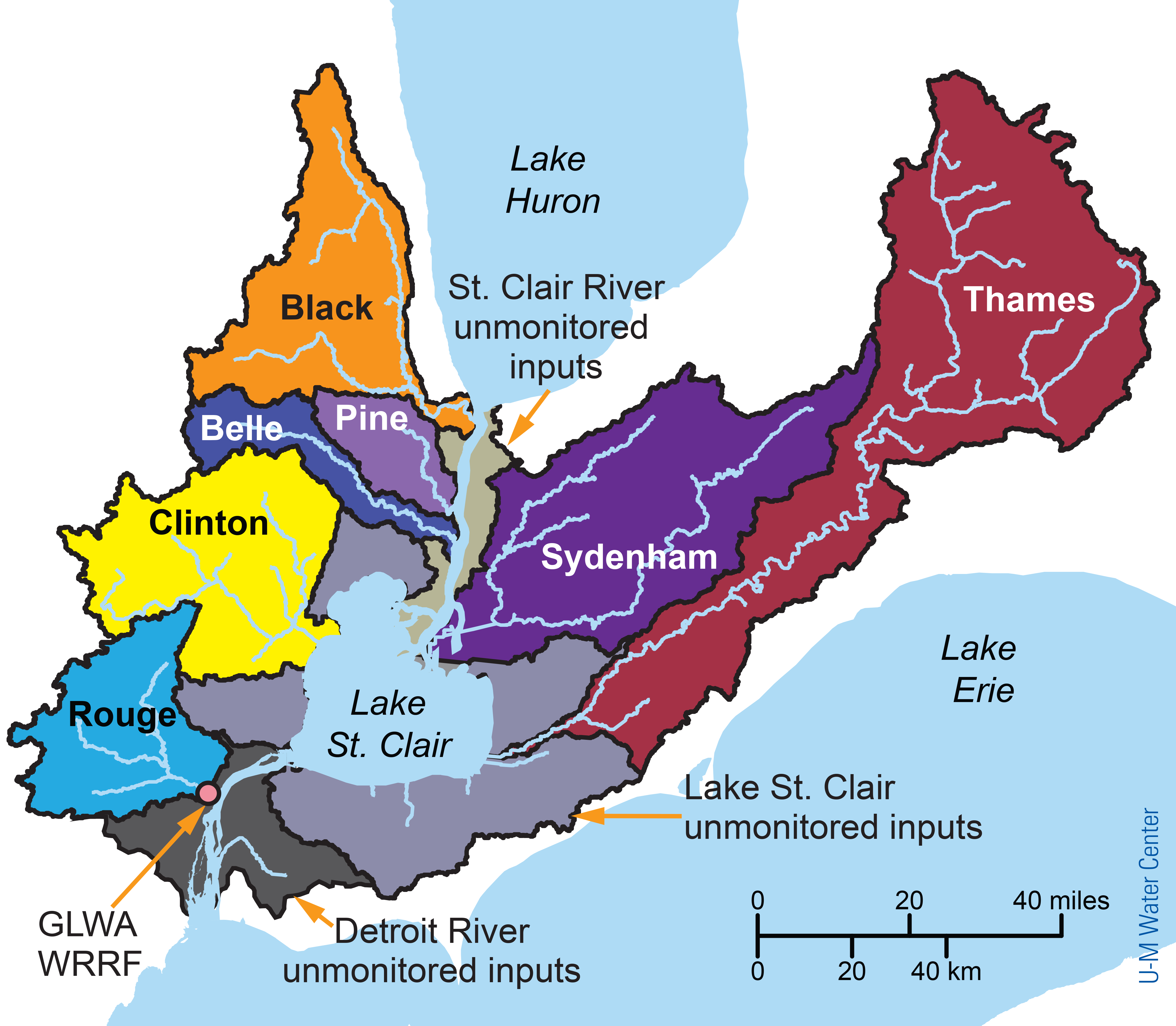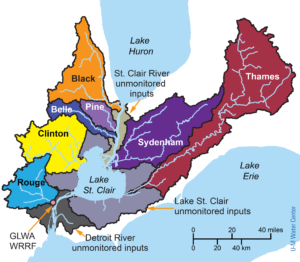Source: Michigan News

Map of the binational St. Clair-Detroit River System watershed, which includes lands on both sides of the international border that drain into the St. Clair River, Lake St. Clair, and the Detroit River. Land on the U.S. side of the watershed is heavily urbanized, while the Canadian side is mainly agricultural. Image credit: U-M Water Center.

Map of the binational St. Clair-Detroit River System watershed, which includes lands on both sides of the international border that drain into the St. Clair River, Lake St. Clair, and the Detroit River. Land on the U.S. side of the watershed is heavily urbanized, while the Canadian side is mainly agricultural. Image credit: U-M Water Center.
More Info
-
Overall, total phosphorus levels in the Detroit River have declined 37% since 1998. The decline is chiefly due to technical improvements at the regional wastewater treatment plant in Detroit and to phosphorus sequestered by zebra and quagga mussels on the bottom of Lake Huron.
-
The researchers calculated that 54% of the Detroit River’s total phosphorus load comes from Lake Huron—a proportion three to four times higher than previous estimates. The higher-than-expected contribution from Lake Huron is due, in part, to a previously undetected phosphorus source.
-
After Lake Huron, the largest contributors of phosphorus to the Detroit River are the regional wastewater treatment plant in Detroit and the heavily agricultural Thames River watershed in Ontario.
-
Efforts to reduce the amount of phosphorus coming off croplands should focus on land management practices such as adding cover crops and buffer strips, creating or restoring wetlands, and applying fertilizer below the soil surface. Focused use of those practices could help reduce phosphorus loads from agricultural watersheds by 40% or more.
-
Most climate models predict the region will experience warmer temperatures and increased precipitation in the future, including more frequent and intense storms in the spring and summer. Therefore, climate change is likely to make nutrient-reduction efforts in the Detroit River watershed more challenging.


